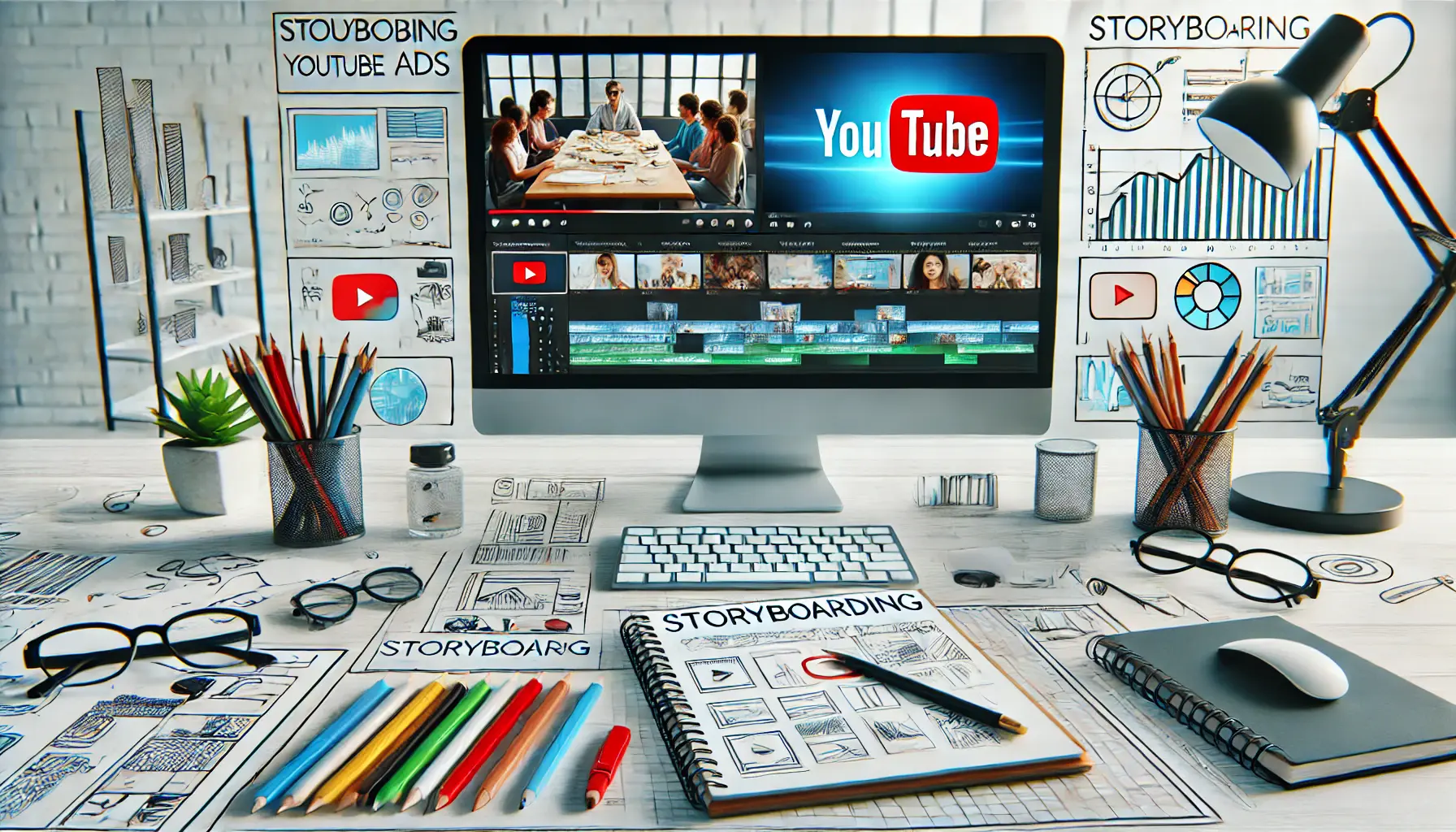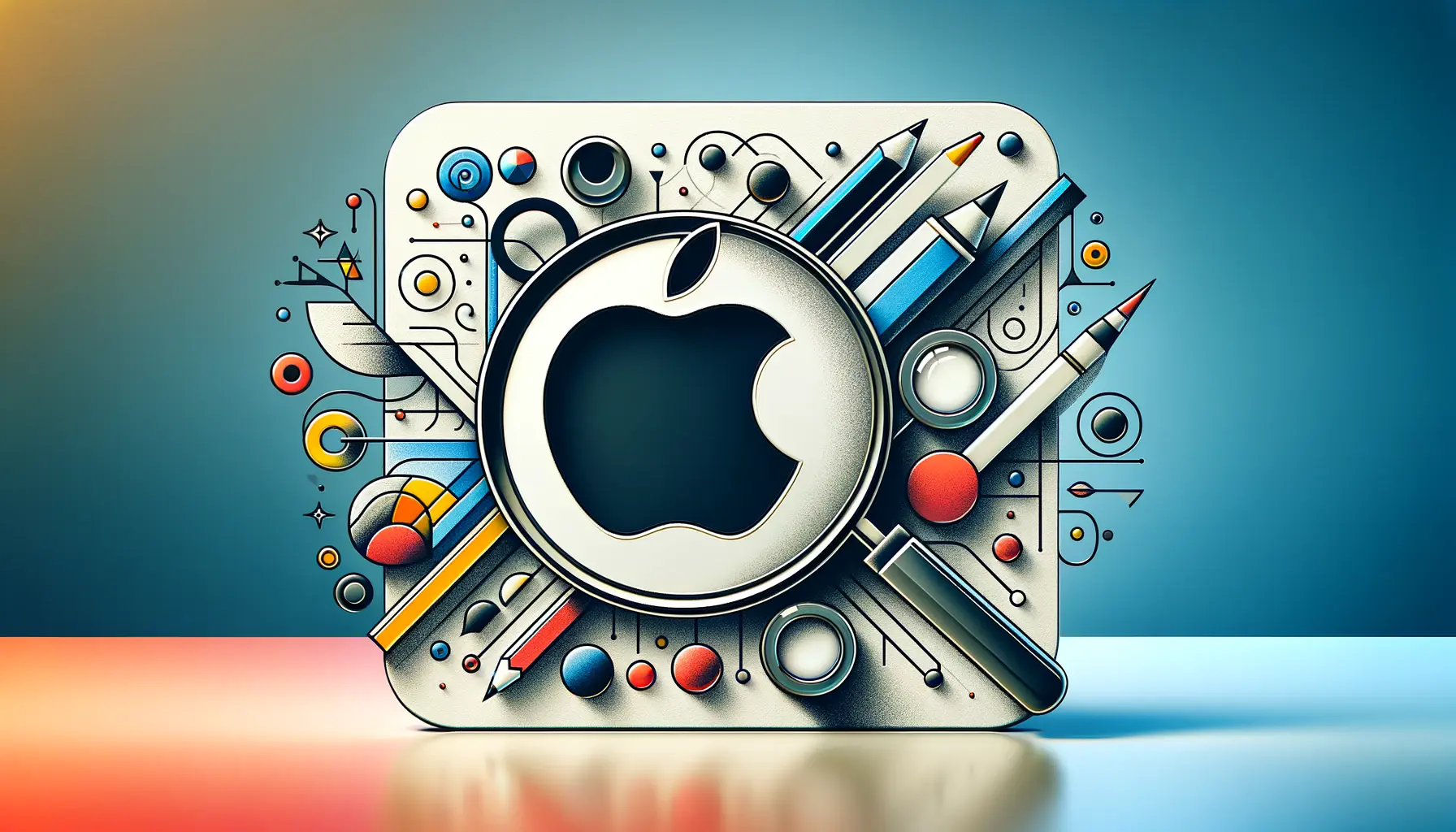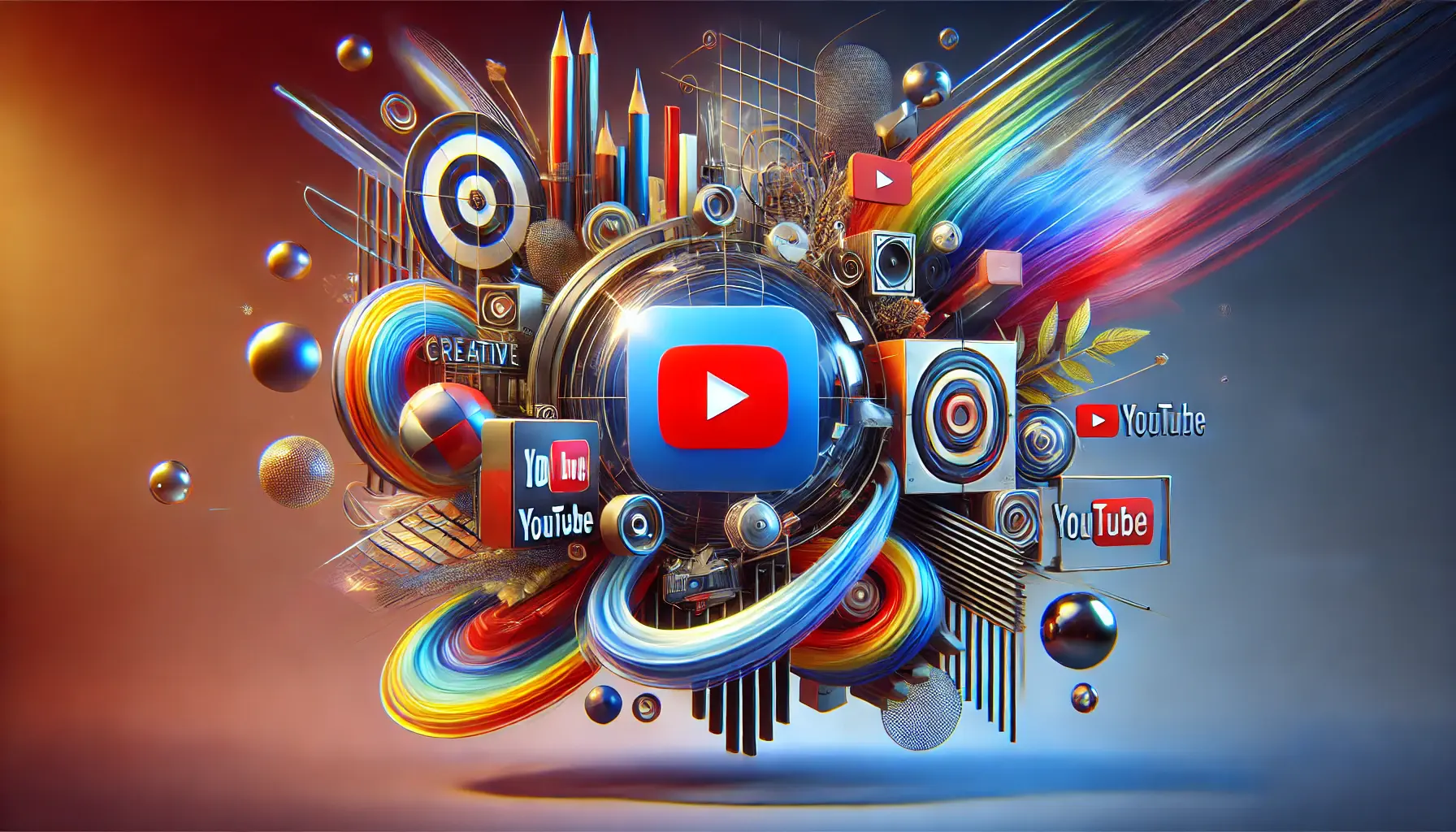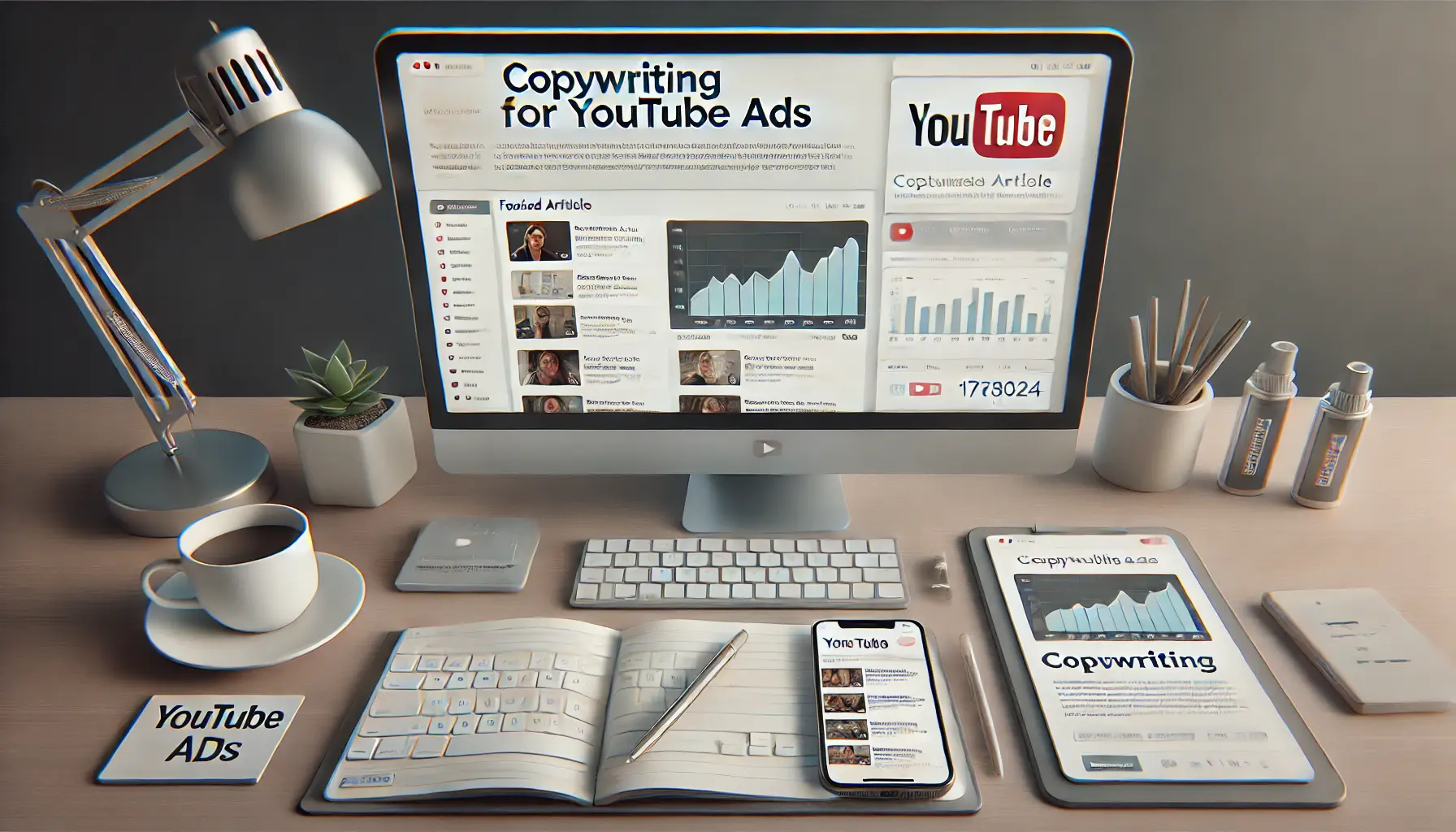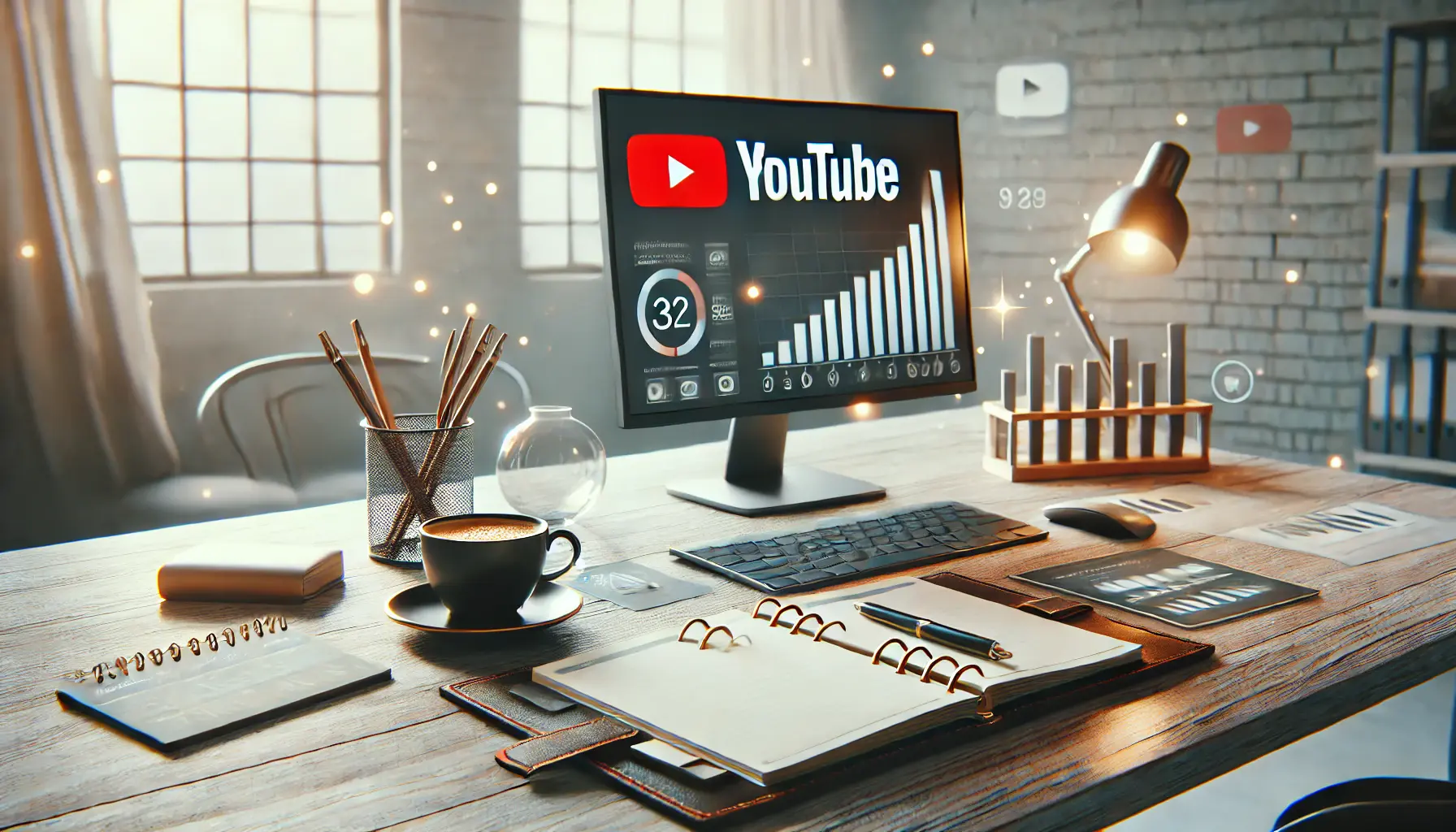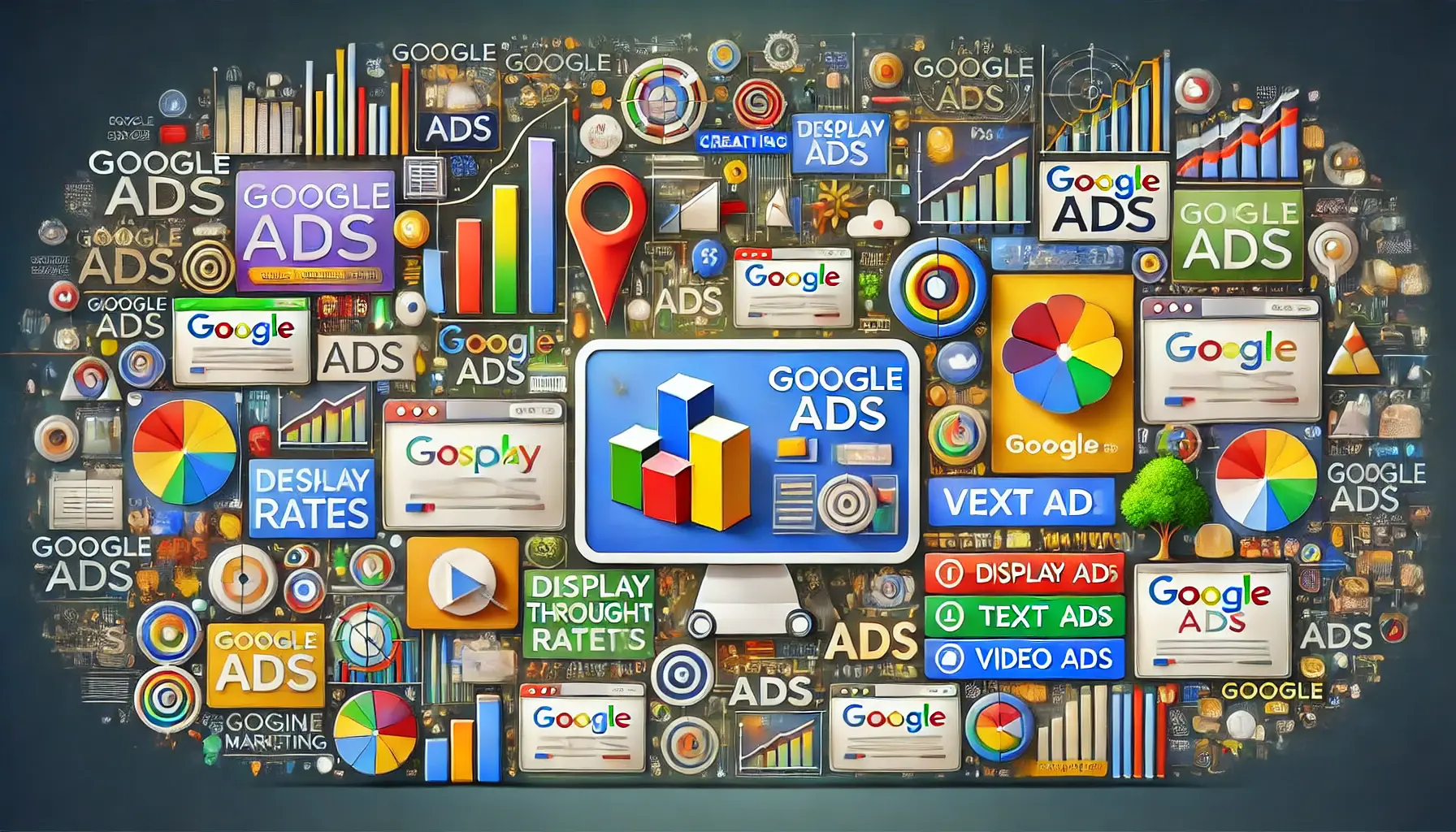YouTube ads have rapidly grown to become one of the most commanding ways for businesses to capture audience attention in the digital space.
Creative storyboarding helps not only in creating visually appealing ads but also in ensuring a smooth narrative flowThe sequence of events or ideas that are structured to tell a story or present information effectively. that engages your audience.
Whether you are an experienced marketer or a newcomer, mastering creative storyboarding techniques can elevate your YouTube ad campaigns to new heights.
- Understanding the Basics of Storyboarding
- Maximizing Visual Impact in Your Storyboards
- Integrating Branding Seamlessly into Your Storyboard
- Engaging Your Audience with Emotional Storytelling
- Optimizing Storyboards for Mobile Viewing
- Mastering Creative Storyboarding for Impactful YouTube Ads
- Creative Storyboarding: Frequently Asked Questions
Understanding the Basics of Storyboarding
Storyboarding is the foundation of any successful YouTube ad campaign.
It serves as a visual blueprintA detailed plan or layout that guides the visual elements of a project. that outlines your ad’s structure, flow, and key messages.
By mapping out your ideas, you can identify potential improvements and ensure every second of your ad has a purpose.

A creative workspace illustrating the process of defining storyboarding in advertising campaigns.
Defining Storyboarding in Advertising
At its core, storyboarding is a means of sketching or visually plotting the sequence of scenes in your ad.
This process helps you decide how your story unfolds, what visuals to include, and where your key messages go.
Think of it as a roadmap that guides the creative process.
- Visual clarity: Storyboards bring abstract ideas to life, making them clearer to understand and easier to execute.
- Time efficiency: Planning visuals and transitions in advance saves time during production.
- Collaboration: It serves as a reference point for everyone involved in the project, from designers to editors.
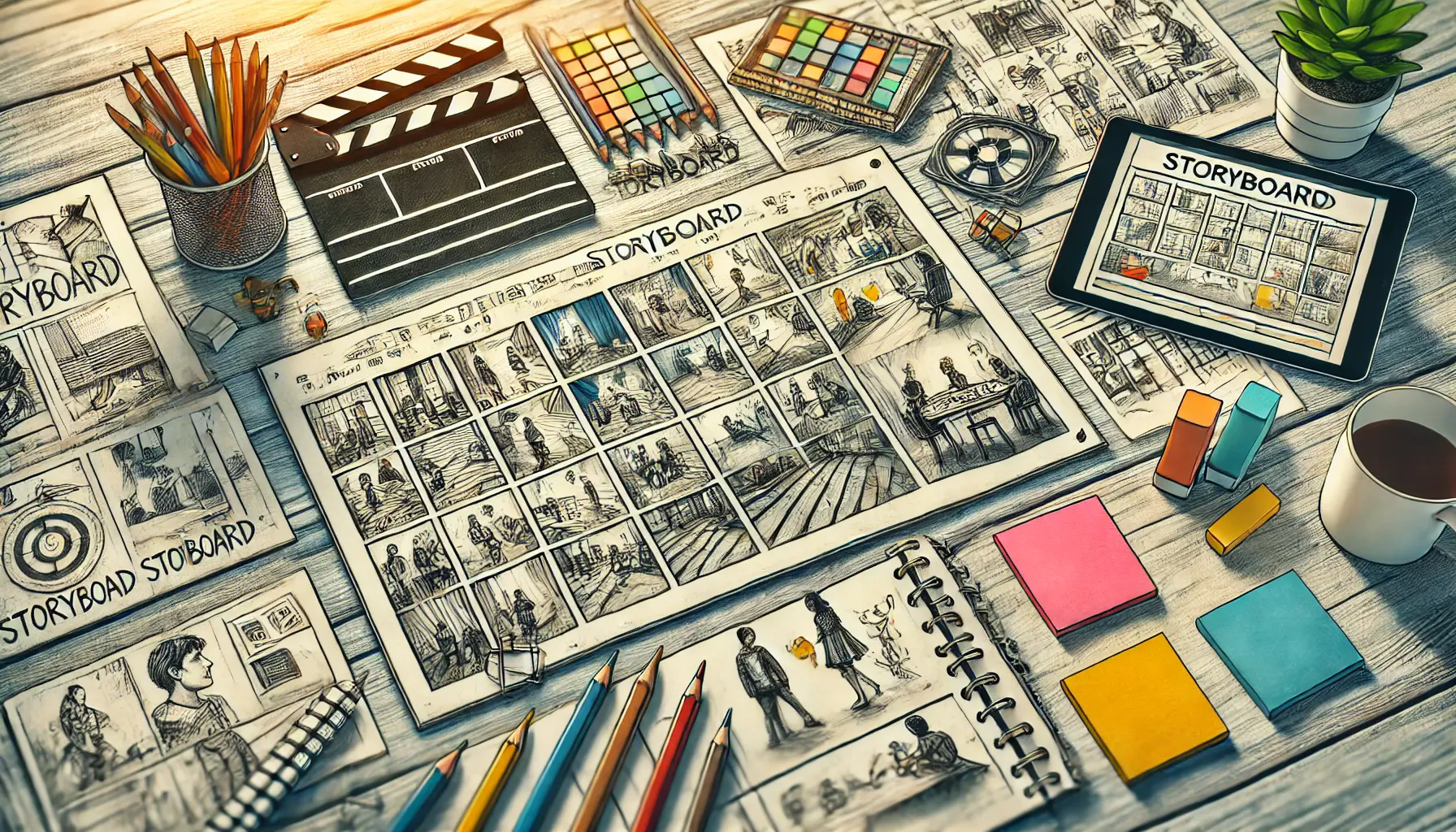
undefined
Key Components of an Effective Storyboard
A great storyboard focuses on the essential elements that drive your narrative.
Here are the key components:
- Scenes: Divide your ad into clear sections, each representing a specific idea or message.
- Visuals: Highlight the imagery, colors, and graphics to be used in each scene.
- Text and dialogue: Add any on-screen text or voiceover scripts for clarity.
- Transitions: Determine how transitions between scenes are to be made to create a seamless viewing experience.
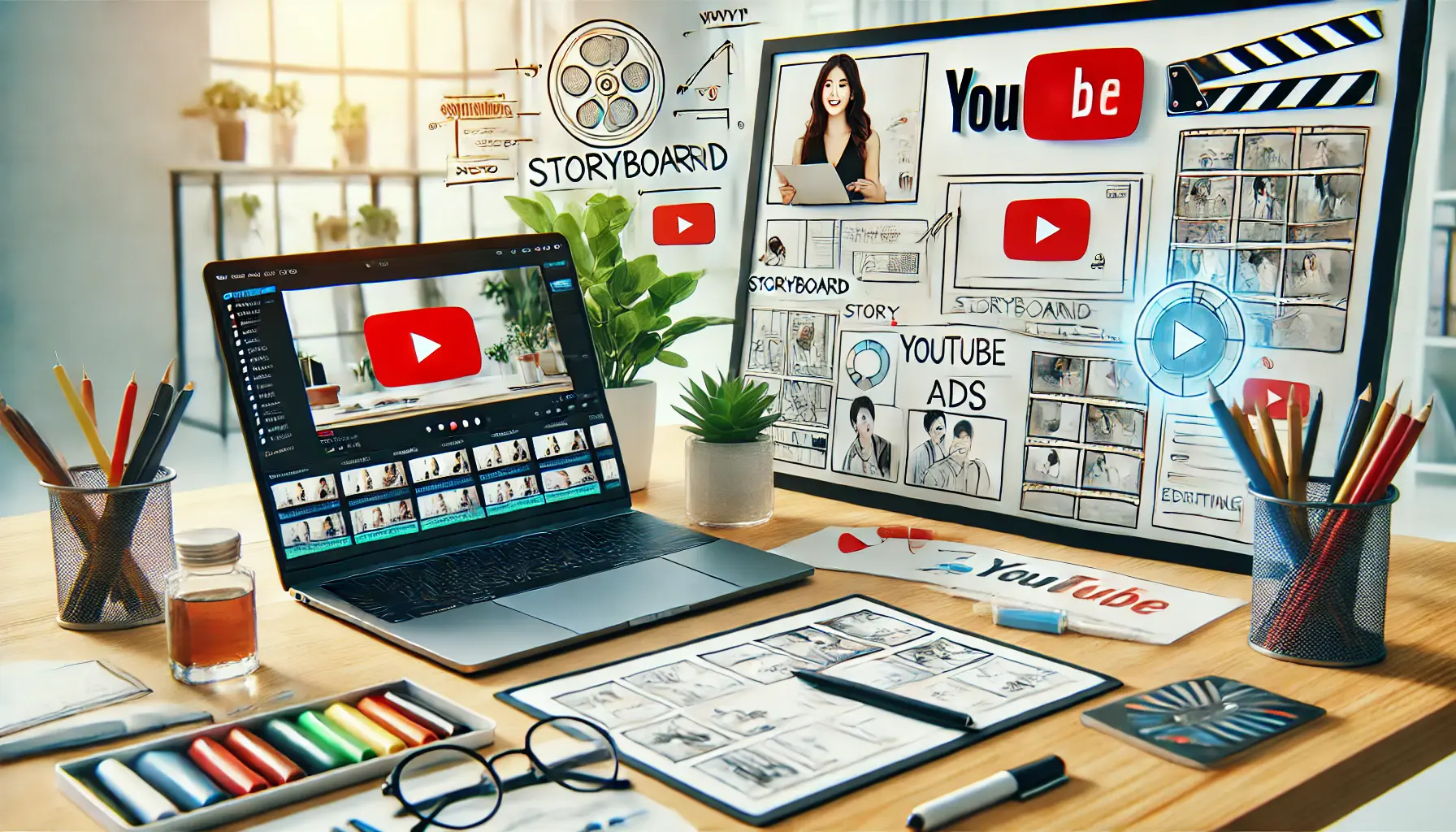
A modern workspace representing the role of storyboarding in planning YouTube advertisements.
The Role of Storyboarding in YouTube Ads
YouTube ads differ in the audience they reach and often need to convey messages within a very short time.
Creative storyboarding helps you optimize this process by:
- Articulating your vision: Ensuring your creative ideas align with your campaign goals.
- Maximizing engagement: Strategizing on what to show and tell at the beginning of your ad to captivate viewers.
- Maintaining consistency: Keeping your ad’s tone and branding uniform across all scenes.
Storyboarding is more than just a preparatory step; it’s a creative exercise that can define the success of your YouTube ad campaign.
By understanding its basics and applying it effectively, you lay the groundwork for impactful, memorable ads.
Storyboarding acts as the roadmap for a successful YouTube ad, allowing you to visualize, plan, and optimize every second for maximum impact.

A creative workspace demonstrating the process of maximizing visual impact in YouTube ad storyboards.
Maximizing Visual Impact in Your Storyboards
Creating compelling YouTube ads requires more than just a good script; the visual elements play a crucial role in capturing and retaining viewer attention.
By focusing on creative storyboarding, you can enhance the visual impact of your ads, making them more engaging and memorable.

undefined
Utilizing Color and Composition Effectively
Color and composition form the basis of creative storyboarding and play a significant role in how your ad is perceived by your target audience.
Color can be used effectively to evoke specific emotions and set the tone.
For example, warm colors like red and orange can convey excitement and urgency, while cool colors like blue and green evoke calmness and trust.
By understanding color theoryThe study of how colors interact, influence emotions, and are used in design to achieve aesthetic and functional goals., you can align visuals in your ad with how you want your audience to feel.
Composition involves arranging visual elements within each frame to guide the viewer’s eye and highlight key aspects of your message.
Techniques such as the rule of thirdsA composition guideline in visual arts and photography that divides an image into nine equal parts for better balance. can create balanced and aesthetically pleasing frames, enhancing the overall effectiveness of your ad.
By thoughtfully combining color and composition, your creative storyboarding can lead to more impactful and engaging YouTube ads.
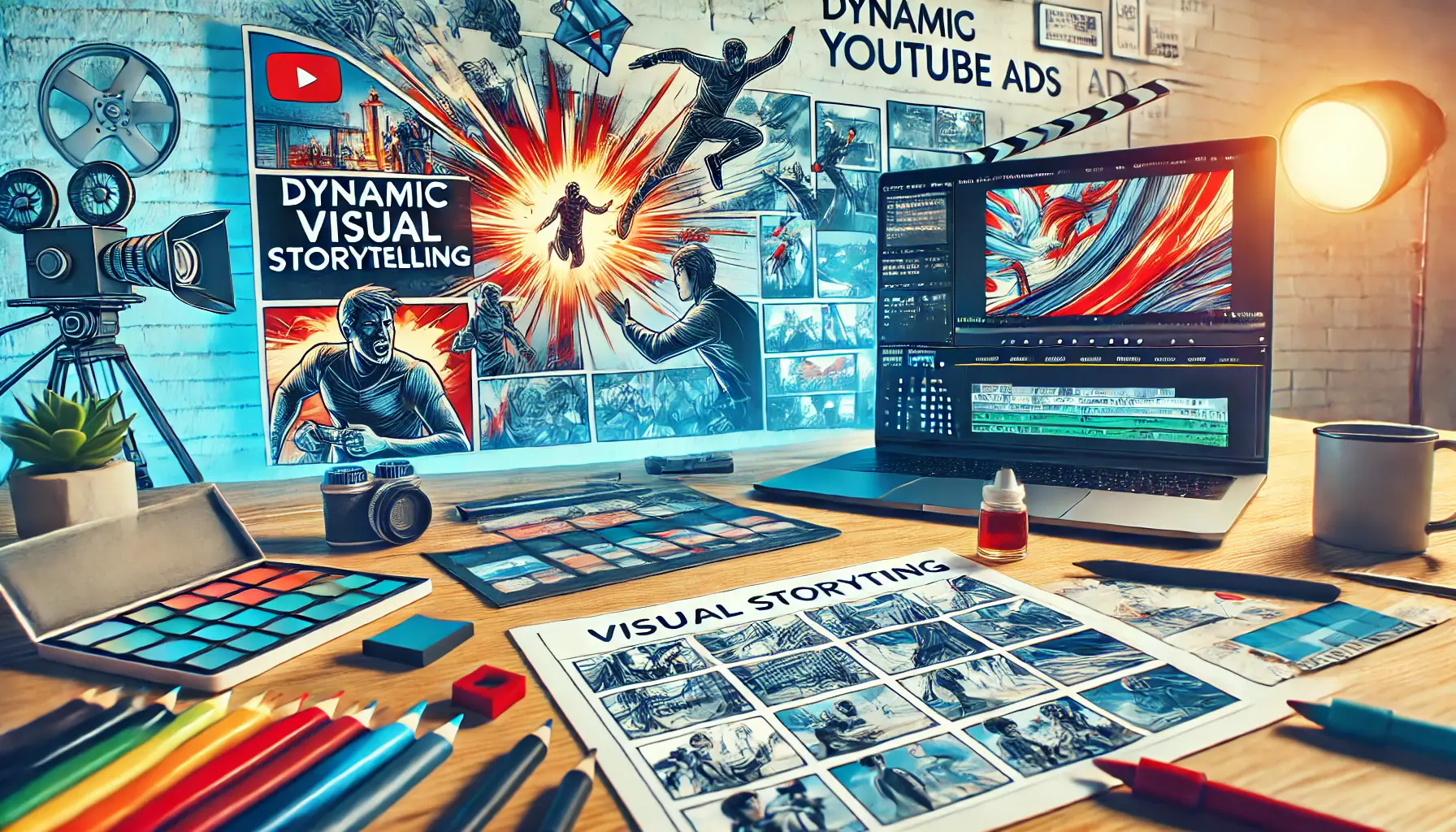
A modern and vibrant workspace illustrating the process of incorporating dynamic visual storytelling in YouTube ads.
Incorporating Dynamic Visual Storytelling
Storyboarding in creative terms means creating a dynamic visual story, which is particularly essential in YouTube advertising.
The flow of movement, pacing, and transitions are vital elements in building a storyline that holds viewers’ attention.
Dynamic elements, such as motion graphicsAnimated graphic design elements used to convey information or enhance visual storytelling., quick cuts, and varying camera angles, add energy and help maintain interest throughout the ad.
This approach not only makes the content more visually appealing but also helps convey the message more effectively, ensuring that the audience remains attentive and engaged.

A creative workspace illustrating how engaging visuals enhance viewer interaction in storyboarding.
Enhancing Viewer Engagement through Visuals
Aesthetic creativity in storyboarding for YouTube advertisements involves using engaging visuals.
Images should be high-resolution, graphics should be appealing, and scenarios must be relevant.
Visual storytelling—showing rather than telling—allows viewers to grasp the message intuitively and quickly.
Furthermore, when viewers find something resembling their experiences or desires, the advertisement becomes more relatable, thus increasing engagement and generating a positive response.
By focusing on these aspects of creative storyboarding, you can create YouTube ads that are not only attention-grabbing but also resonate with your audience, making your advertising campaigns more effective and memorable.
Effective use of color and composition enhances the visual storytelling of your ads, ensuring they captivate and retain audience attention.

A professional workspace illustrating how branding elements can be seamlessly integrated into a storyboard.
Integrating Branding Seamlessly into Your Storyboard
Incorporating your brand identity into your YouTube ad storyboard is essential for building recognition and trust.
Creative storyboarding allows you to weave branding elements naturally into your narrative, ensuring your brand presence enhances rather than disrupts the viewer’s experience.
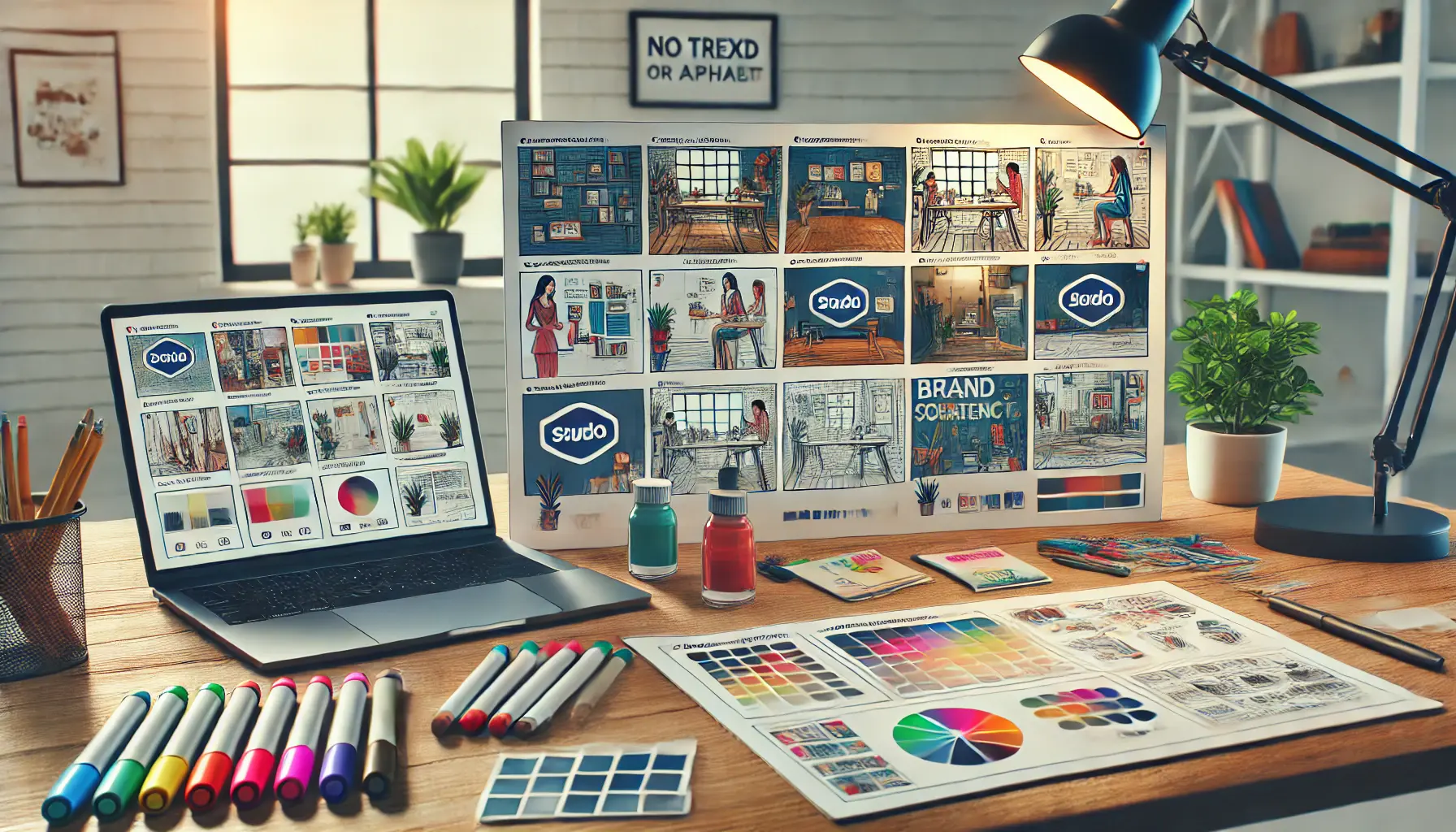
A creative workspace illustrating the importance of maintaining brand consistency across storyboard scenes.
Maintaining Brand Consistency Across Scenes
Consistency is key in reinforcing brand identity.
To achieve this:
- Use a consistent color scheme: Apply your brand’s color palette throughout to create a cohesive look.
- Incorporate your logo thoughtfully: Place your logo in scenes where it naturally fits and doesn’t overpower, such as on products or within the environment.
- Ensure uniform typography: Use brand-specific fonts for on-screen text to maintain visual harmony.
By maintaining these elements consistently, your audience will more easily recognize and remember your brand.

A creative workspace illustrating how brand values are integrated into storytelling within a storyboard.
Storytelling with Brand Values
Embedding your brand’s core values into the narrative makes your ad more relatable and authentic.
Consider the following approaches:
- Develop relatable characters: Create characters that embody your brand’s values, allowing viewers to connect on a personal level.
- Craft scenarios reflecting your mission: Design situations that highlight how your brand addresses specific challenges or fulfills needs, showcasing your commitment to your mission.
- Highlight real-life applications: Show your product or service in action, demonstrating its impact and relevance in everyday life.
By aligning your storyboard with your brand’s values, you create a narrative that resonates with your audience, fostering a deeper connection and enhancing brand loyalty.
Creative storyboarding integrates branding seamlessly into your storyboard, ensuring your YouTube ad is not only engaging but also effectively communicates your brand identity.
Seamlessly integrate brand elements like logos and color schemes to reinforce recognition while keeping the narrative engaging.

A vibrant workspace demonstrating how emotional storytelling engages an audience in storyboarding.
Engaging Your Audience with Emotional Storytelling
In the realm of YouTube advertising, connecting with your audience on an emotional level is paramount.
Creative storyboarding serves as a powerful tool to craft narratives that resonate deeply, fostering a lasting bond between your brand and viewers.

A professional workspace demonstrating the process of crafting relatable characters and scenarios for storyboarding.
Crafting Relatable Characters and Scenarios
Developing characters and situations that mirror your audience’s experiences or aspirations heightens relatability.
This approach humanizes your brand and makes it more accessible to them.
Consider the following strategies:
- Identify target audience demographics and psychographics: Understand their age, gender, interests, and challenges to build characters they can relate to.
- Reflect real life: Add scenarios that your target audience faces in everyday life to make your ad relevant and impactful.
By aligning your storyboard with your audience’s reality, you create a compelling narrative that captures attention and fosters connection.
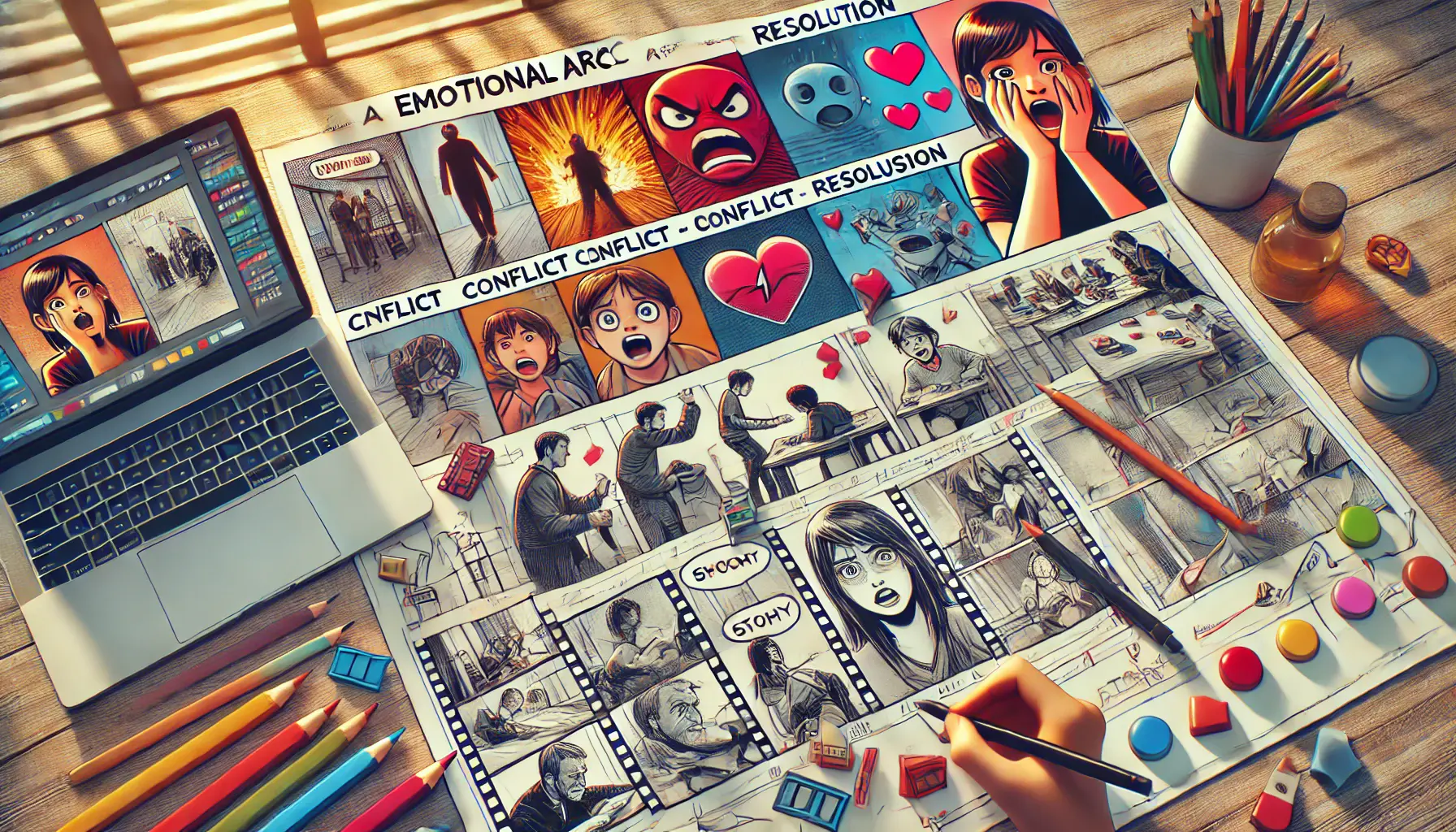
A dynamic workspace illustrating the process of building an emotional arc in a narrative through storyboarding.
Building an Emotional Arc in Your Narrative
An effective emotional arc guides viewers through a journey, eliciting feelings that align with your brand’s message.
To construct a captivating emotional arc:
- Introduce a relatable conflict or challenge: Introduce a problem to which your audience can relate; this will set the stage for your brand as the solution.
- Develop a progression of emotions: Take viewers on a journey from curiosity to empathy, and finally to satisfaction as the story unfolds.
- Conclude with a memorable resolution: The ending should reinforce your brand’s values and leave a positive mark that won’t easily be erased.
This structured approach not only engages the viewers but also strengthens your brand positioning as a solution to their problems.

A dynamic workspace demonstrating the use of emotional drivers to connect with viewers through storyboarding.
Leveraging Emotional Drivers for Viewer Connection
Utilizing specific emotional triggers can significantly enhance viewer engagement.
Consider the following techniques:
- Appeal to universal emotions: Tap into feelings like joy, fear, love, or nostalgia to create a broad connection.
- Use music and visuals synergistically: Combine emotive music with compelling visuals to amplify the emotional impact.
- Include storytelling: Use suspense, surprise, or humor in your narrative to keep people’s interest and elicit an emotional response.
By strategically integrating these elements into your creative storyboarding, your YouTube ads can transcend traditional advertising, offering experiences that resonate emotionally and drive viewer engagement.
Crafting relatable characters and scenarios, coupled with an emotional arc, fosters a deep connection with viewers and enhances brand loyalty.

A workspace illustrating the process of optimizing storyboards for mobile-friendly formats.
Optimizing Storyboards for Mobile Viewing
In today’s digital landscape, a significant portion of YouTube content is consumed on mobile devices.
This shift necessitates a mobile-first approach to creative storyboarding, ensuring your ads are effective and engaging on smaller screens.

A professional workspace illustrating the design process for small screens, ensuring storyboards are optimized for mobile devices.
Designing for Small Screens
When crafting your storyboard, consider the limited screen size of mobile devices.
To enhance clarity and impact:
- Simplify visuals: Use clear, bold images without clutter so that key elements are easily discernible.
- Enlarge text: Ensure on-screen text is large enough to be read comfortably without straining.
- Focus on central elements: Place the most important visual components in the center of the frame where they are most likely to be noticed.
By optimizing your visuals for the small screen, you increase viewer understanding and retention of your message.

A workspace illustrating how storyboards are adapted for vertical and square formats in modern design.
Focus on Vertical and Square Formats
Most mobile phones are held vertically.
The vertical (9:16) and square (1:1) formats are more ideal for mobile screen adaptation.
Consider the following in developing storyboards:
- Vertical videos: Make the most of portrait mode to provide a fully immersive experience without asking viewers to rotate their device.
- Square videos: Offer versatility across platforms and maintain a balanced appearance on mobile screens.
Aligning your storyboard with these formats ensures your ad appears natural and engaging to mobile viewers.
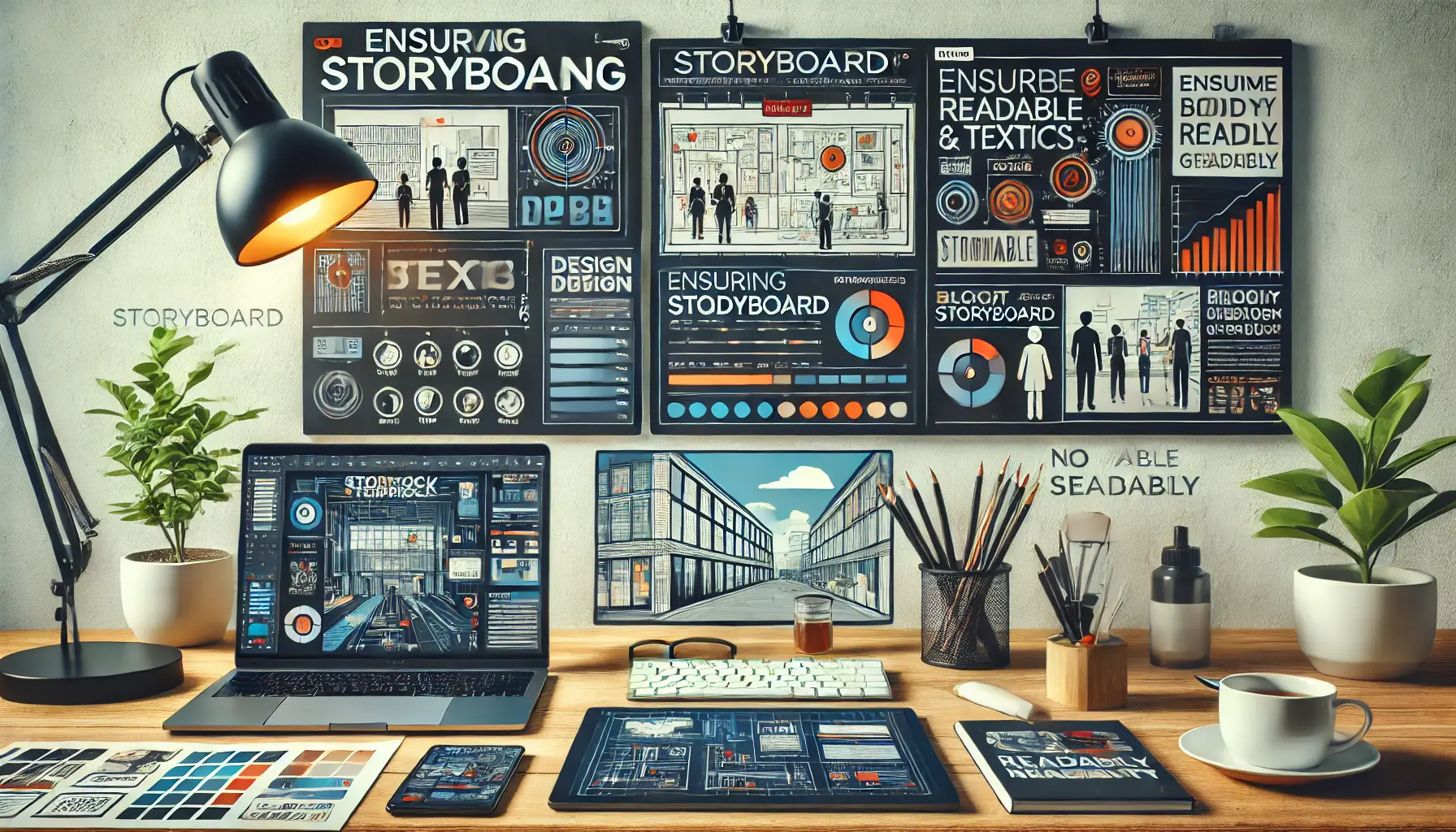
A professional workspace demonstrating the importance of readable text and graphics in storyboarding.
Ensuring Readable Text and Graphics
Small screens can make detailed visuals challenging to interpret.
To maintain clarity:
- Use high-contrast colors: Choose color combinations that make text and graphics stand out against the background.
- Limit on-screen text: Keep text concise to prevent overcrowding and enhance readability.
- Test legibility: Preview your storyboard on various mobile devices to ensure all elements are easily readable.
By prioritizing readability, you ensure your message is effectively communicated regardless of screen size.

A professional workspace illustrating the optimization process for mobile load times in storyboarding.
Optimizing for Mobile Load Times
Mobile users expect quick-loading content.
To prevent viewer drop-off due to slow load times:
- Compress video files: Reduce file sizes without compromising quality to speed up loading times.
- Use adaptive streaming: Implement technology that adjusts video quality based on the viewer’s internet speed.
- Minimize complex animations: Keep animations simple to reduce the processing burden on phones and tablets.
By integrating these mobile optimization strategies into your creative storyboarding process, you ensure your YouTube ads are accessible, engaging, and effective for the growing mobile audience.
Design for small screens by simplifying visuals, enlarging text, and focusing on mobile-friendly formats like vertical or square layouts.
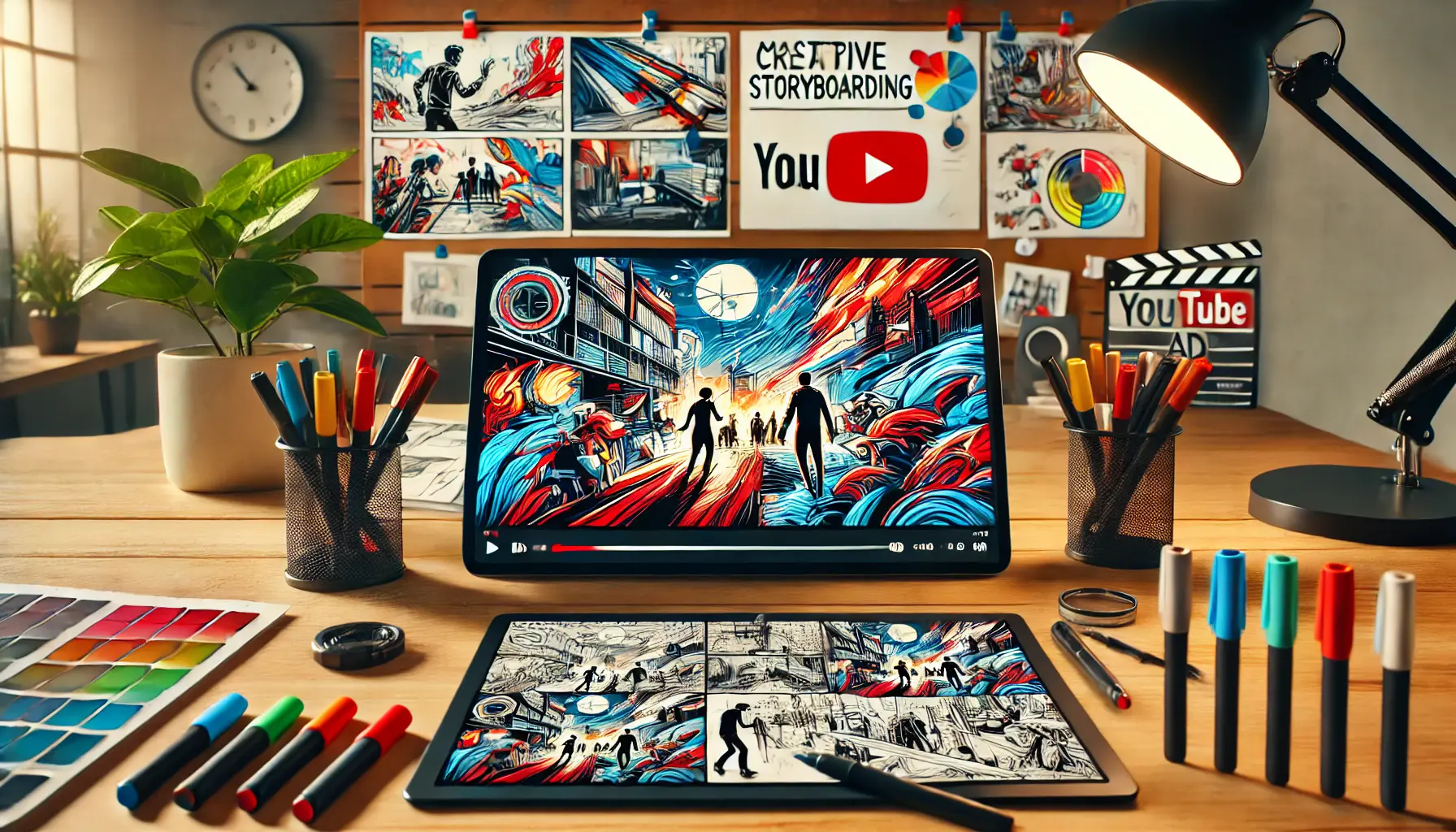
A modern workspace illustrating the creative process of mastering storyboarding for impactful YouTube ads.
Mastering Creative Storyboarding for Impactful YouTube Ads
Creative storyboarding is the cornerstone of crafting engaging and effective YouTube ads.
By combining meticulous planning with innovative visual and narrative techniques, businesses can create ads that captivate audiences and communicate their message with precision.
This article has explored how storyboarding can transform your advertising strategy and elevate the impact of your campaigns.

A workspace showcasing how creative storyboarding plays a critical role in visual content creation.
Why Creative Storyboarding Matters
Storyboarding isn’t just a preparatory step; it’s a strategic tool that shapes the success of your ads.
From seamlessly integrating branding to leveraging emotional storytelling, every aspect of storyboarding contributes to creating a memorable viewer experience.
Focus on the following key elements to maximize the potential of your YouTube ads:
- Visual impact: The ads should look good not only on desktops but also on mobile devices.
- Emotional connection: Tell your story to engage better with the audience, fostering trust and relatability.
- Brand consistency: Reinforce brand identity with thoughtful use of logos, colors, and messaging.
- Audience engagement: Design ads that resonate with your viewers’ experiences and aspirations, making them more likely to connect with your content.
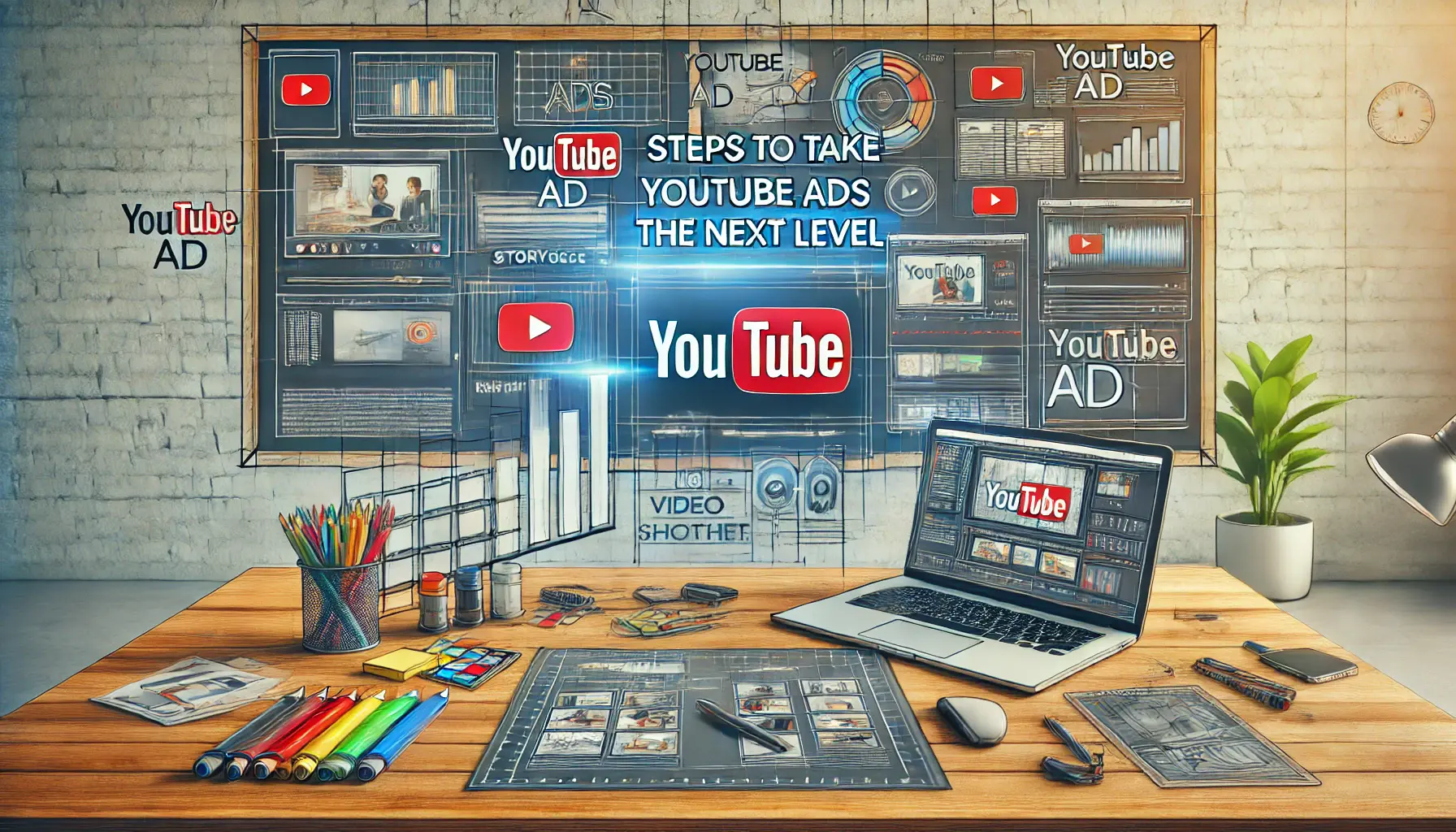
A dynamic workspace illustrating the steps to take YouTube ads to the next level through structured and creative planning.
Steps to Take Your YouTube Ads to the Next Level
To make the most of creative storyboarding, consider the following steps:
- Plan your narrative: Outline a clear storyline that aligns with your brand values and marketing goals.
- Focus on visuals: Use colors, typography, and graphics effectively to enhance the visual appeal of your ads.
- Test for effectiveness: Preview your storyboard on different devices to ensure readability and impact across all platforms.
- Adapt for mobile: Design for vertical and square formats to engage the growing mobile audience.
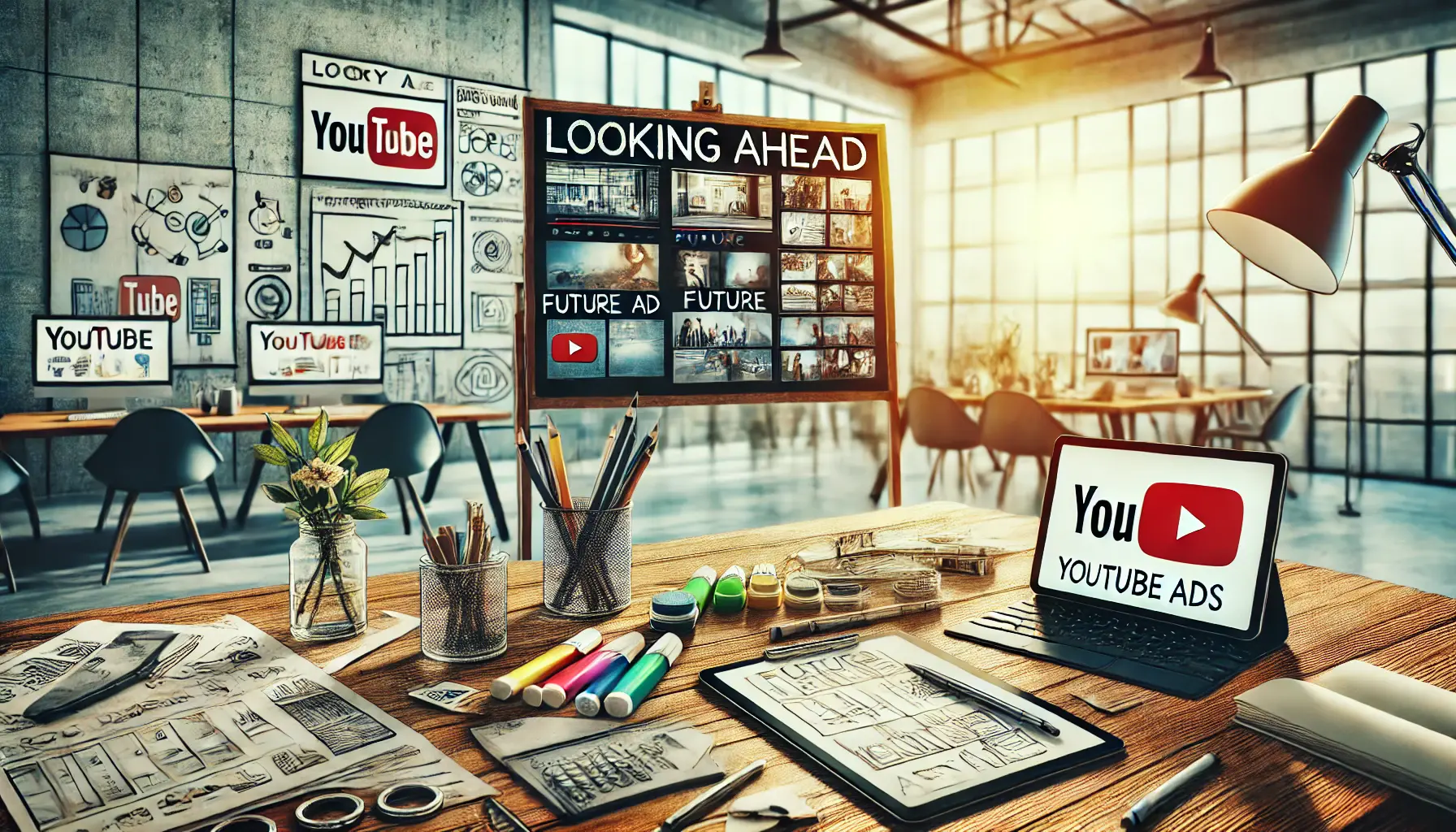
undefined
Looking Ahead
The world of digital advertising is constantly evolving, and staying at the top requires innovation and adaptability.
Creative storyboarding remains a crucial element in any successful campaign, helping brands connect with their audience on a deeper level.
By applying these principles from the article, you’ll be able to create YouTube ads that capture attention and drive long-lasting results.
Leverage creative storyboarding to your advantage and transform your YouTube advertising strategy into an unforgettable experience for your audience.
Creative storyboarding combines strategic planning with innovative visuals, enabling businesses to craft ads that leave a lasting impression.
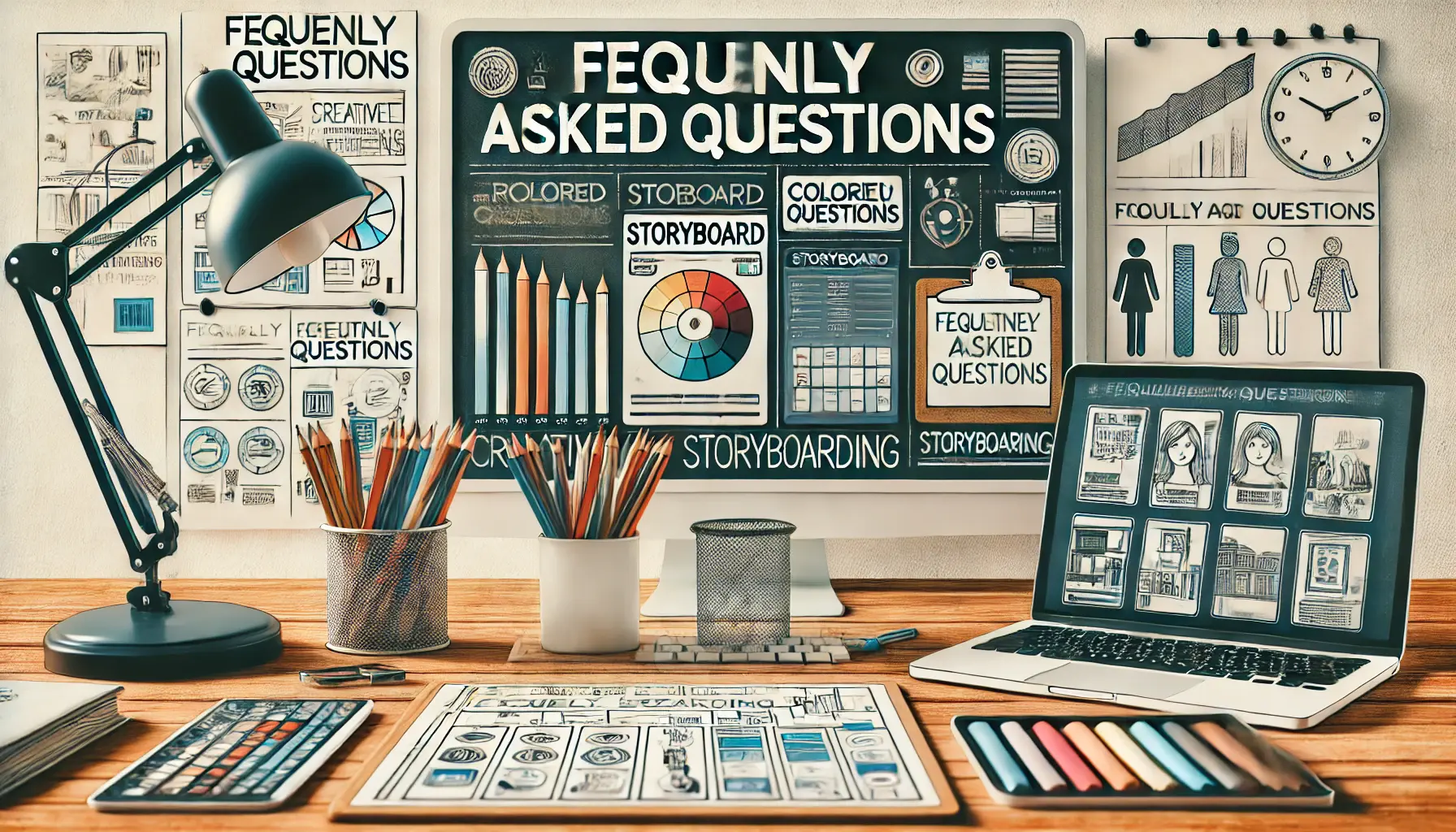
A clean and organized workspace illustrating the concept of frequently asked questions in the creative storyboarding process.
Your campaigns can be managed by an agency specialized in Google Ads, check out our service page.
Creative Storyboarding: Frequently Asked Questions
Delving into creative storyboarding for YouTube ads often raises several questions.
Below are some frequently asked questions to provide clarity and enhance your understanding of this crucial process.
Creative storyboarding involves sketching a visual sequence of your ad’s scenes, outlining the narrative flow, camera angles, and key messages to effectively plan and communicate your advertising concept.
Storyboarding ensures a coherent narrative, aids in visualizing ideas, and facilitates collaboration among team members, which in turn enables more engaging and effective YouTube ads.
Storyboarding allows for thorough planning of visuals and narrative flow, thereby creating ads that emotionally connect with the viewers, increasing their level of engagement and retention.
Yes, incorporating brand elements like logos, color schemes, and messaging into the storyboard ensures consistency across all scenes, reinforcing brand identity throughout the ad.
Planning scenes in advance through storyboarding allows for identifying potential issues early, reducing the need for costly revisions during production, thus saving time and resources.
Even for short ads, storyboarding is beneficial as it helps in organizing ideas, ensuring clarity, and maximizing the impact within the limited timeframe.
Various tools like Storyboard That, StudioBinder, and MakeStoryboard offer features tailored for creating detailed and collaborative storyboards for video ads.
The level of detail depends on the complexity of the ad; however, including key scenes, transitions, dialogues, and notes on visual elements is generally recommended.
Absolutely, a well-crafted storyboard serves as a blueprint, guiding the production process and ensuring the final ad aligns with the intended vision and marketing objectives.
